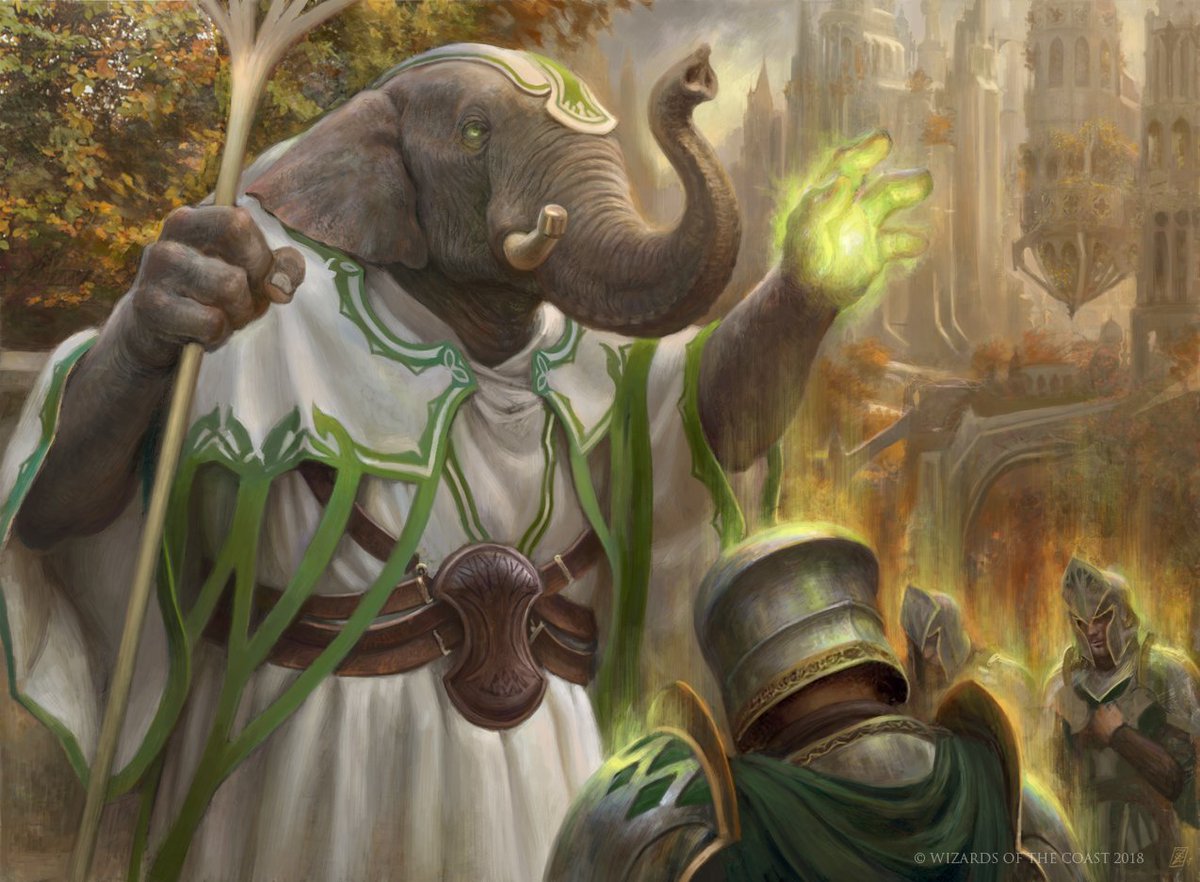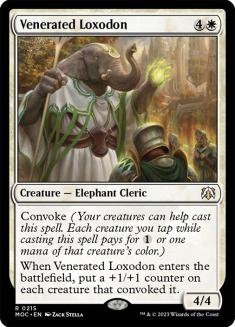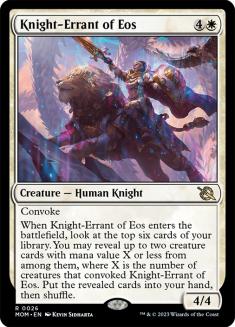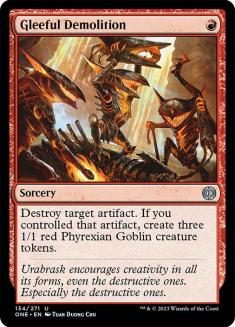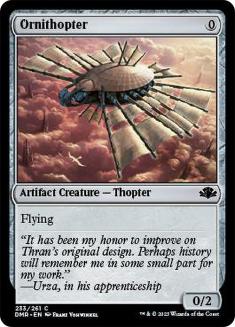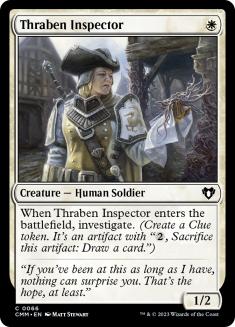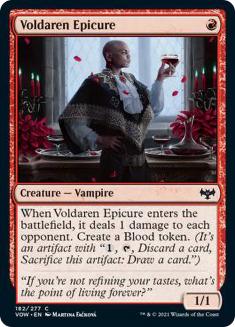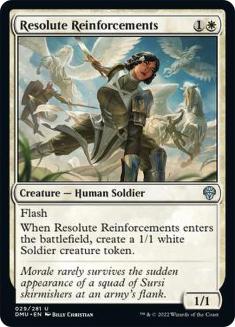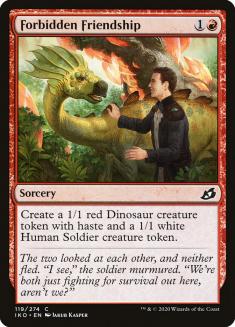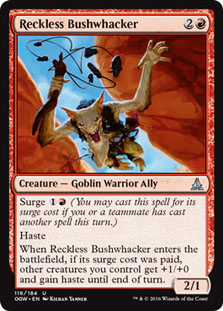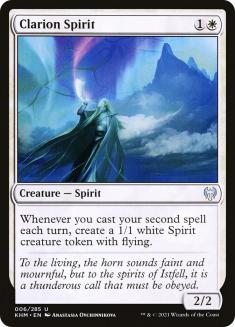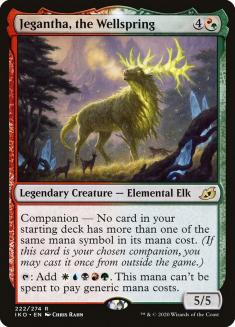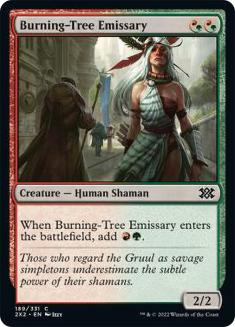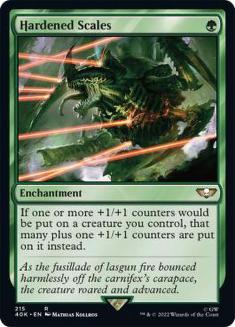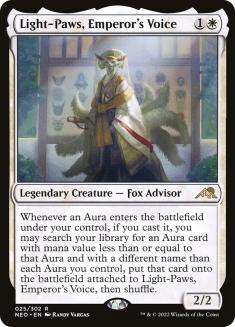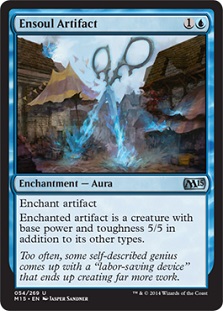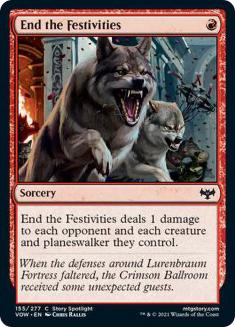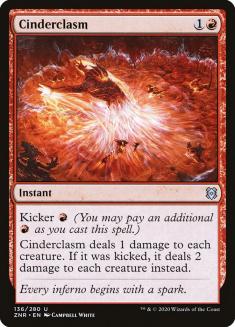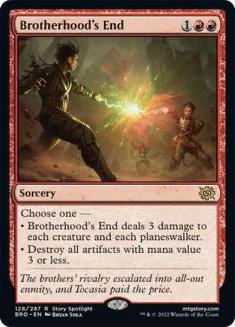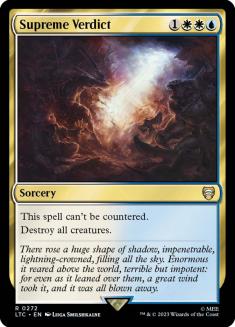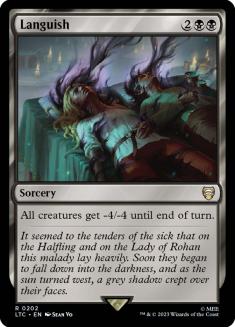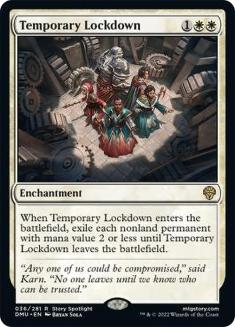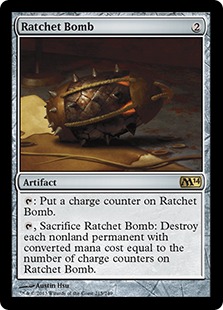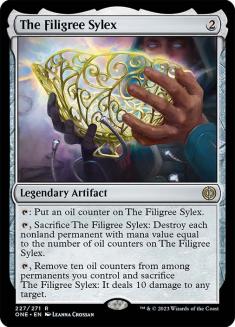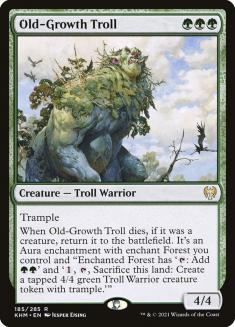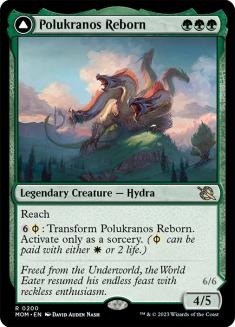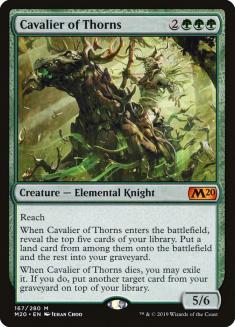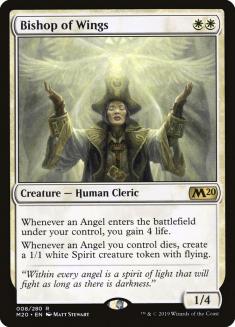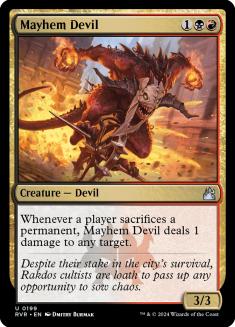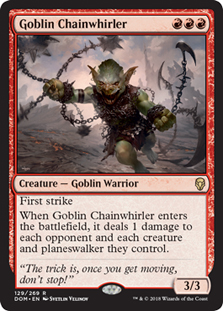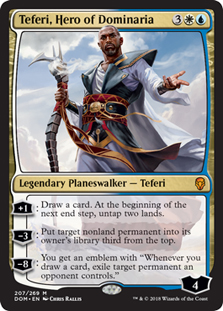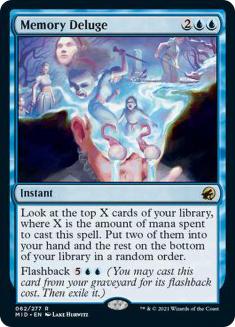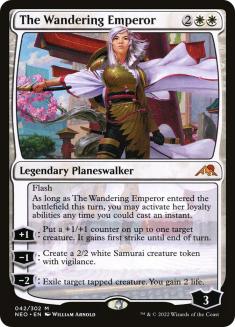If you followed Magic Twitter over the past week, you’d be forgiven for thinking the sky is falling and an old menace has risen from the dead. Boros Convoke burst onto the Pioneer scene this weekend, dominating a Pioneer Challenge on Magic Online (MTGO) and throwing a perfectly timed curveball into the plans of anyone preparing for the upcoming Regional Championships.
This finish caused a firestorm. The Leagues on MTGO were immediately infested by Boros Convoke. If you had hoped to test against anything else, you were out of luck, and any deck that couldn’t keep up with it was effectively unplayable for days. Key cards like Reckless Bushwhacker shot up in price and were sold out on card vendors and rental services. Convoke was the talk of the town, and Twitter was awash with screenshots of truly disgusting starts.
The comparisons to the Hogaak, Arisen Necropolis sequences that traumatized Modern players for too long were overblown, but understandable. Draws like that deserve your attention.
What’s Going On?
Venerated Loxodon was a figurehead for aggressive white decks in smaller formats and powered some fringe decks in Modern with free creatures like Memnite and cheap token creators, but never found a home in between in Pioneer. That has changed in a big way, as it’s finally possible to build a dedicated Convoke strategy thanks to Knight-Errant of Eos. With eight payoffs with similar setup requirements, you can build your entire deck around convoking your five-drop to maximum effect as soon as possible. A fully convoked Knight-Errant’s trigger can dig up another Knight-Errant or a Loxodon as a follow-up for your next turn.
Gleeful Demolition is a new and improved riff on Kuldotha Rebirth, a key piece of similar decks in Standard and Pauper. There aren’t many opposing artifacts you’re keen to blow up in Pioneer – and there won’t be as long as Boros Convoke and its four maindeck Demolitions are popular – but three bodies for one mana is a great rate by itself and enables the fastest convoke starts.
Memnite is missing from Pioneer, but its inspiration in Ornithopter is a free creature for Convoke and the cheapest possible target for Demolition. Thraben Inspector and Voldaren Epicure are valuable one-drops that give you a separate, noncreature target for Demolition (which, unlike Ornithopter, ensure that Demolition can’t be fizzled easily by a removal spell).
You want multiple creatures from one card to power convoke, and there are lots of options now. Resolute Reinforcements is the best of the bunch and is joined by Forbidden Friendship in lists that want a red spell as a follow-up for Burning-Tree Emissary. Other options include Servo Exhibition as a source of more Demolition targets and the original version of this effect, Raise the Alarm. You want a white creature to pay for that part of the convoke creatures’ cost, so any token maker that creates one (which notably includes Forbidden Friendship) has an automatic edge.
When you use cheap spells to build a large army, Reckless Bushwhacker is the obvious way to go over the top. Bushwhacker is often the card you most want to find with Knight-Errant of Eos, and a timely Bushwhacker can speed up your clock by a turn to swing a race or steal a game out of nowhere.
Boros Convoke can become Boros Convoke (Jegantha) if you’re willing to pay for it. Burning-Tree Emissary is a powerful but polarizing card in this shell – it’s another ‘free’ creature that plays perfectly with Bushwhacker, but underwhelms when you can’t chain it into something else. If you don’t believe in Emissary, the rest of the core is compatible with Jegantha, the Wellspring; further, you free up slots for other options like Clarion Spirit as an additional reward for playing cheap spells and a source of staying power in the mirror or in slower matchups.
This recipe is excellent against Rakdos Midrange, the main litmus test for any new Pioneer deck. One-for-one removal like Fatal Push can’t keep up with Gleeful Demolition or Resolute Reinforcements, and Push itself is especially poor, as it can’t hit the convoke creatures.
There have been successful aggro decks in Pioneer, from traditional red decks to the current crop of tribal decks, but removal could handle them all. Getting to pair Fatal Push with Bonecrusher Giant is a big selling point for Rakdos Midrange, and Rending Volley is one of the format’s most important sideboard cards. This go-wide blitz strategy is a new problem that demands new solutions.
Is the Sky Falling?
If you can’t handle a deck at its worst, you don’t deserve it at its best. Boros Convoke dazzles you with promises of a dozen power on Turn 2, but fails to show up or communicate with you at all sometimes. You can’t judge someone’s true character based on a selective self-portrait on social media – nobody tweets a screenshot when they mulligan to five and don’t take a relevant game action.
(Well, with a few honourable exceptions…)
The Hogaak comparisons are disrespectful to the memory of the fallen Necropolis. Hogaak was such a menace that it framed Bridge from Below for its crimes – and, after it was supposedly crippled by that ban, it still put up ban-worthy results at a Pro Tour where Leyline of the Void was the most popular card!
This panic around Boros Convoke is already being reflected in people’s deckbuilding choices as everyone searches for increasingly narrow hate cards to stamp out this menace. Decks like Selesnya Angels that were on the decline are receiving renewed attention solely because of their excellent matchup against Boros Convoke. The deck may well deserve this level of respect and may survive this targeted hate – but let us at least put that to the test before declaring it the second coming of Hogaak.
There is already a family of decks in Pioneer that can build an impressive battlefield quickly in a mostly non-interactive way. Few of these decks have gained or kept much traction – even the Selesnya Auras deck that stormed Pro Tour Phyrexia has disappeared since then. That doesn’t automatically spell doom for this new contender, but it points to a larger structural flaw it must overcome.
Even if the format rises to the challenge and blunts this new threat, it’s fair to say that Boros Convoke is a stark reminder of Pioneer’s flaws. It’s a novelty for now – but in one sense it’s just more of the same.
How to Fight Back
There’s no shortage of good sweepers in Pioneer – but how do you choose the right tool for the job?
Timing is critical. A sorcery-speed sweeper is exploitable by Reckless Bushwhacker on either end – you might never get a chance to cast the sweeper if the Bushwhacker turn is big enough, and if you spend your turn wiping the battlefield, your shields are down against a second wave headlined by Bushwhacker. You want to limit the opponent’s ability to build their battlefield and cast a convoke creature in one turn – an instant-speed sweeper at the right time can strand a threatening Knight-Errant or Loxodon. Be careful about the timing here – the active player gets priority again once a spell has resolved, so they can cast Gleeful Demolition and immediately use the tokens to pay for a convoke cost.
Size matters too. These tokens start at 1/1, but Venerated Loxodon can change that. A Thraben Inspector or Burning-Tree Emissary dies to Cinderclasm or Kozilek’s Return, but Loxodon fixes that too. This ties into the point about timing – End the Festivities is much less reliable than it looks at first glance. The convoke creatures are big enough to survive sweepers that care about toughness or mana value. Even if everything else dies, a 4/4 can often finish the job.
The most important factor is speed. You know your Supreme Verdict will sweep everything, but will you have time to cast it? Languish is the most effective option in black, but costing four makes it too slow against their best draws, which demand that kind of response. The tradeoff between cost and reliability makes this choice difficult.
Temporary Lockdown is one of the best answers in the abstract but, by definition, the decks that can support it don’t have much else going on in the early-game. Lockdown is great, but the Lockdown decks are vulnerable when they don’t draw Lockdown.
Ratchet Bomb and its oily knockoff stand out as colourless answers available to any deck that can be detonated at instant speed to contain a Bushwhacker turn.
Removal and sweepers only get you so far. Knight-Errant of Eos is inherently strong against sweepers if that’s all you bring to the table. You need to be working towards something.
Big blockers are often much tougher obstacles than removal. If you think about what happens when you cast a Fatal Push on a creature that can only attack and block, marking it with a blocker achieves the same outcome but leaves you with a more flexible tool. Even a mediocre blocker can hold off a wide army of unenhanced 1/1s, and you can aim much higher than mediocre in this format.
Mono-Green Devotion is a tricky matchup for Boros Convoke – their best starts are almost as terrifying as yours, they can stall the ground easily, and even your convoke creatures can’t attack well into their average blocker. As the game goes long, Karn, the Great Creator threatens to explode a Ratchet Bomb or let them ignore everything going on in the game with the Pestilent Cauldron loops.
The other synergistic creature decks can use their blockers to buy time while assembling their superior forces. Selesnya Angels can laugh off even a massive attack once Bishop of Wings and Righteous Valkyrie clock in; Rakdos Sacrifice can clean up a horde of tokens with Mayhem Devil with enough time.
The Alternative Story
There’s another story that you could tell about Pioneer this past weekend. At the Nerd Rage Gaming $10k Showdown in Minneapolis, control enthusiast Sean Gallagher squared off against Daniel Weiser – world champion in several other card games and no slouch in this one – in the finals in an Azorius Control mirror. The only loss either player took on the day was in the final, where Weiser’s larger list with Yorion, Sky Nomad took home the trophy.
Why did such a dominant performance get so much less attention? It’s no surprise that a flashy new deck generates more buzz than a known quantity, but there’s more to it than that. If Boros Convoke is tailor-made for amazing moments and incendiary Twitter screenshots, Azorius Control is just the opposite. The question of how representative those exciting stories are doesn’t arise here – control decks are simply boring in a way that nine power on Turn 1 could never be. You countered a spell, got a nice two-for-one with Supreme Verdict, and now you’re resolving Memory Deluge… I can feel my eyes glazing over already!
The success of Azorius Control might be great news for Boros Convoke – and vice versa. Pioneer is often interesting to follow and frustrating to prepare for because there’s such a wide range of strategies on offer. You can play, or play against, pure control in one round and a hyper-aggressive linear deck the next round, but the cards you need against each don’t overlap at all. If you want to prepare for this new threat, the tools are there – if you want to prepare for that without leaving yourself exposed to a resurgence in Azorius Control, that’s a tall order. Each Path to Peril or Ratchet Bomb you add to your Rakdos Midrange sideboard takes up a slot that can’t go to another Duress.
These decks at opposite ends of the spectrum put a tight squeeze on everything in between. You can make an educated guess about which of these enemies to target and predict the metagame accurately, only to end up with the wrong tools against something that wasn’t on your radar. This, along with some matchups feeling like they are decided as soon as the die roll determines who starts, earns Pioneer many critics, even though it is very healthy by some metrics.
Interactive decks like Azorius Control are most susceptible to this squeeze on paper. Rather than gambling on which reactive tools to run, it’s very tempting to show up with a powerful, proactive strategy and force the opponent to register and draw the right answers. Boros Convoke certainly qualifies there, and so do Pioneer staples like Mono-Green Devotion or Lotus Field Combo.
Maybe this is just an example of the system working – a new deck shows up and takes a tournament by storm, the hype dies down as the format adjusts, and the new craze becomes a known quantity that waits for the next arrival to steal its thunder. There are several large, serious Pioneer tournaments coming up – let’s see if Boros Convoke can make itself heard.

